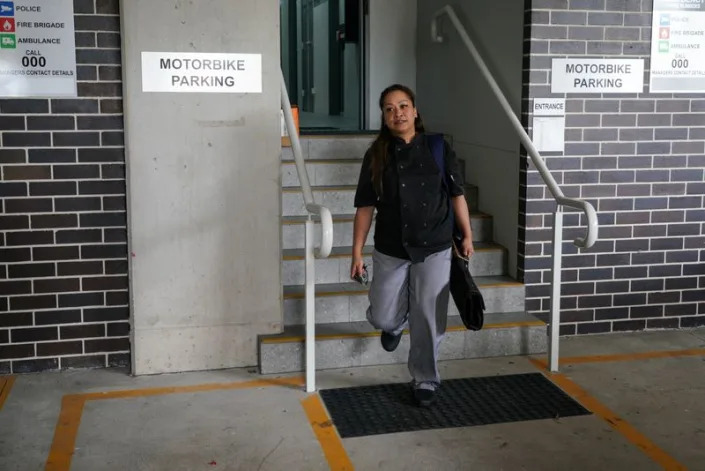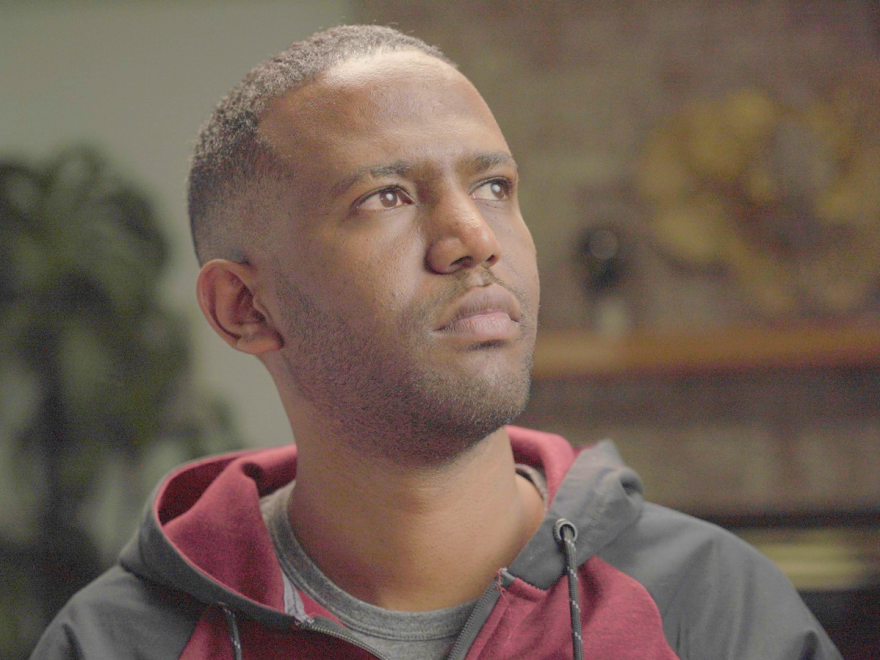Australia's hidden housing crisis is getting worse as many face homelessness


Mon, December 19, 2022
By Stella Qiu and Praveen Menon
CAMPBELLTOWN, Australia (Reuters) - Belinda has applied for more than 100 rental homes in the past year and been rejected every time.
The 39-year-old Australian single mother of four now lives in an temporary shelter in Campbelltown, southwest of Sydney, and has six months to find a home that costs under A$500 ($340) a week, or risk ending up sleeping rough.
"I don't know where I'm supposed to go after that. I have got a house full of furniture that I don't really want to get rid of. I don't really want to get rid of my cat or my puppy," said Belinda. "It is a bit scary to tell you the truth."
Relentlessly rising rents, eight consecutive interest rate hikes, surging living costs and devastating natural disasters in the past few years have inflamed what was already among the world's least affordable rental markets.
Every state capital city is experiencing a decline in rental affordability this year, according to the annual Rental Affordability Index report published by SGS Economics and Planning.
GRAPHIC: Australians struggle to find rentals https://www.reuters.com/graphics/AUSTRALIA-PROPERTY/zgpobbnqavd/chart.png
Across Australia, couples out of work and single parents on government aid face a market where only 0.1% of rentals are affordable, according to another report by not-for-profit welfare group Anglicare.
A person on the minimum wage is barely better off, as wages fail to keep up with spiralling rents. Sydney is listed among the world's top 10 most expensive rental markets by property agency Savills, above cities including Miami and Paris.
In Demographia's International Housing Affordability report this year, Sydney ranked the world's second-least affordable market, behind only Hong Kong.
"You cannot afford a house on your own if you are only working one job," said Maria, 46, a resident at a housing programme run by the not-for-profit Dignity in Campbelltown.
"When I leave here - let's be realistic - it's going to be hard for me if I am by myself."
Rental supply is at the lowest in two decades, pitting renters against record numbers of people who can no longer afford to buy after a surge in house prices.
"We have seen increasingly at the lower end of the market, people on lower incomes, the supply of rental stock available to them is reducing quite significantly, so this could have spillover effects on homelessness," said Cameron Kusher, Director of Economic Research at Data firm PropTrack.
GRAPHIC: Rents hit record highs
HOMELESSNESS 'TSUNAMI'
Rising migration levels after borders reopened this year have added to demand, with competition for properties resulting in rental bidding wars. The New South Wales government announced last week it would ban auction-style rental bidding.
Renters, however, are getting evicted by home-owners looking to jack up rents to keep pace with rising inflation, which is at a 32-year high, welfare groups and renters told Reuters.
Suzanne Hopman, Dignity's CEO, told Reuters they were heading to what could be the busiest Christmas they have ever had, as more and more people seek a place to rest, food and other support.
"We fear there is a tsunami of homelessness about to hit," said Hopman, whose shelter in Campbelltown is already packed to capacity.
"Every story of homelessness is different but one thing that we are noticing now is the cost of living and increasing rents, which has put additional pressure on people who were at risk of homelessness, and the lack of housing supply," she added.
Many made homeless end up living in cars or campervans, out of sight from society, the government and the media.
Film maker Sue Thomson and producer Adam Farrington-Williams' feature documentary 'Under Cover' records the lives of dozens of women over 50 and their experiences of homelessness.
"They are the hidden homeless. Gender inequality and wage disparity are all issues that led to it and need to be considered when looking at homelessness," Thomson said.
Australia's worst floods on record in the east of the country earlier this year destroyed homes and forced about 40,000 people to evacuate, adding to the housing crisis.
SEEKING SOLUTIONS
Property owners say rising costs are forcing them to raise rents.
"Cost pressures include rising interest rates, rising maintenance costs, and other related costs such as strata fees and council fees," said Debra Beck-Mewing, Strategic Buyers Agent and Vice President of Property Owners Association of New South Wales.
Beck-Mewing said rents were rebounding after many property owners dropped rents during COVID, and will likely to continue to increase in 2023 due to increased rental demand after immigrations allowances were raised by almost one-third.
"We’re already massively undersupplied with rental properties because the government has continued to drive investors out of the market. And now with increased migration, the rental problem will continue to get worse," said Beck-Mewing.
Public and low cost housing has also failed to keep up with demand.
A report by Australian Institute of Health and Welfare (AIHW) showed there were 440,200 social housing dwellings nationwide at June 2021, an increase of less than 1% in the previous 12 months. Waiting times for social housing applicants can now be up to 10 years.
Prime Minister Anthony Albanese has promised a fix and announced a national housing accord in October, which includes a A$350 million grant for the construction of 10,000 affordable homes.
The government has enlisted the country's A$3.3 trillion pension fund industry to help build affordable homes, although some funds and experts are sceptical.
Trina Jones from Homelessness New South Wales said for the move to be successful, homes need to be representative of social and affordable housing, and not aimed at making profits.
"We know there are families sleeping in tents, in cars, apprentices that cannot retain their apprenticeship because they are experiencing homelessness," said Jones.
"It starts with a home and we must invest in that safety net and provide support for the people to ensure their homelessness is brief and non-recurring."
($1 = 1.4751 Australian dollars)
(Reporting by Praveen Menon and Stella Qiu; Editing by Lincoln Feast.)




















